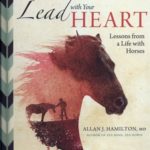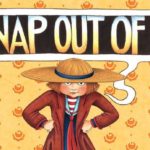Trail and recreational riders, your time has come. If there’s one trend that characterizes the Western horse world in the new millennium, it’s a reformed regard for recreational riders. According to the American Horse Council, recreational horsemen (composed mainly of trail riders and those who don’t compete in formal show competitions) make up 42 percent of the nation?s horse owners. Realizing the potential of this vast group, a number of individuals, clubs, organizations, and associations have stepped up to create new competitive formats and activities built around recreational?as opposed to show?competitors. In addition, enthusiasts with interests as varied as cowboy shooting or mustang gentling have created new arena activities to capture the interest of recreational riders. We’ve rounded up the movers and shakers who are changing the face and format of Western riding in the 21st century. If you’re searching for new activities to do with your horses, perhaps you too will find a new community among these fast-growing, rapidly evolving, new-millennium horse sports.

NEW HORSE SPORT: ACTHA trail riding.
What it is: A judged cross-country trail-ride course that emphasizes riding form, not speed. Judges eye riding skills as contestants negotiate water crossings, open and close gates, charge embankments, and cross bridges?the kinds of obstacles you typically encounter on the trail.
How it began: Burned out from showing yet wanting to do more than everyday trail riding, two Texas women, Carrie Scrima and Karen VanGetson, set out to create a new type of competition. They envisioned a contest in which riders would cover an outdoor course of moderate length (between 5 and 10 miles), encountering a series of judged obstacles along the way. From this humble beginning just four years ago, the American Competitive Trail Horse Association (ACTHA ) has caught fire. In 2011, the organization will sanction close to 1,000 competitive trail rides across the United States and counts roughly 11,000 members.
What it takes: ACTHA competitions don’t require a special horse or extensive training and expertise. One of the organization?s goals is ?to promote the great American trail horse,? which includes grade horses and adopted horses. A portion of event proceeds go to horse rescues and horse-related charities. Of course, registered horses are welcome, too. ACTHA is supported by numerous breed registries including those for Arabians, Appaloosas, Morgans, Paints, Quarter Horses, and Tennessee Walking Horses. Divisions allow riders to compete against others of comparable abilities and ages. Family participation is encouraged. And producing an event is low-key, without a lot of upfront costs. Anyone with a suitable venue, such as a private ranch, equestrian center, etc., can call ACTHA for step-by-step plans, training, marketing assistance, and ride insurance.? H&R sister publication The Trail Rider has teamed with ACTHA , and membership in the group includes a subscription to the trail-riding-focused publication.
NEW HORSE SPORT: Extreme cowboy racing.
What it is: An arena race against the clock, with obstacles that simulate typical ranch work and trail-riding conditions.
How it began: In 2005, well-known clinician, trainer, and Texas cowboy Craig Cameron was scouting for an interesting challenge for his RFD-TV show Ride Smart. What he came up with has become a phenomenon. Initially, Craig Cameron?s extreme cowboy race was a contest in which top trainers from a variety of backgrounds and disciplines competed in a timed arena race, dashing through a series of obstacles meant to simulate real-life ranching and trail situations. The exhibitions?and the competition? were so popular that Cameron began hosting this type of contest for the rest of us. The Extreme Cowboy Association was formed in 2008. Today, the association includes roughly 1,500 members competing in 17 regions across the U.S. and Canada, and hosts an annual world championship event each November.
What it takes: Cameron firmly believes that any horse can participate; there are no restrictions on breed, and the average show or trail horse can be competitive in extreme cowboy racing. ?You don’t have to have an ultra-expensive horse or one with tens of thousands of dollars of training,? said Bill Hull, president of the Extreme Cowboy Association. ?A family can do this without it costing an arm and a leg.? Riders are each placed in one of six divisions, including ones for youth and senior riders. Obstacles are rated by difficulty, so that less-experienced riders encounter relatively easy obstacles, while top pro riders are truly challenged while on course. Speed is of the essence, of course, but points are also awarded or deducted based on how the rider approaches, negotiates, and exits each obstacle.
NEW HORSE SPORT: Mountain/extreme trail.
What it is: Something of a cross between the ACTHA events and extreme cowboy racing, the sports of extreme trail and mountain trail take place on elaborate courses, either indoors or outdoors, designed to replicate actual trailriding scenarios. Think of Disneyland?s Frontierland, with horses. Courses can include log crossings, bridges, and rock obstacles; indoor events can even have elaborately painted backdrops to create the proper mood. Hills, berms, and embankments create elevation changes and challenges. In other words, this isn?t your standard arena trail course. Emphasis is on proper form, although quickness and steady, purposeful movement improve your score. Horses must enter an obstacle on a straight line, move through the obstacle without balking or hesitating, and exit cleanly. Points are earned or deducted based on these criteria, as well as the difficulty of the maneuver and the obstacle.
How it began: The sport is an outgrowth of courses built across the country; Lynn Palm, for example, had an outdoor trail course constructed at top her Fox Grove Farm in Ocala, Florida. Course designer Mark Bolender has built indoor courses for a variety of horse expos across the country; he recently completed a course for the Washington State Horse Park, and he has his own facility, Bolender Horse Park, in Silver Creek, Washington. The daddy of all the courses, however, is at the Oregon Horse Center in Eugene, site of the annual National Mountain Trail Championship. Horse center owner Major Defoe is often credited as the sport?s pioneer; after watching a Pony Club event in which riders crossed plywood-sheet ?bridges? and horses spooked at the silhouette of a plywood Holstein cow, Defoe decided that trailcourse riders deserved more realistic challenges. Realism is the key to Defoe?s twiceannual events. He uses more than 200 tons of rocks, hundreds of yards of dirt, water obstacles (including waterfalls), painted backdrops, logs, pine trees, and branches to create the just-right look. A course, he says, costs about $20,000 to produce and takes a week to construct. At present, the sport goes by many different names: competitive trail, extreme mountain trail, extreme trail, ultimate trail, mountain trail, etc. No formal competition organization exists, but Defoe says some of the sports? supporters are making plans for a series of events across the U.S.
What it takes: Most competitions are open to all breeds. Course complexity varies greatly; some are more suitable for novices, while others can challenge professional horsemen. Simply changing routes through an obstacle can have great effect on degree of difficulty. Interested to see if your horse has what it takes? Bolender, three-time winner of the National Mou
ntain Trail Championship, conducts clinics at his horse park and demonstrates the event at horse expos.
NEW HORSE SPORT: Western dressage.
What it is: Anyone sharing a barn with English riders or who?s seen events such as the World Equestrian Games is familiar with dressage, the ?high schooling? event of English riding. Horses perform pinpoint-precision maneuvers under almost- invisible guidance of their riders. Western or cowboy dressage combines classical dressage maneuvers and training/ performing with Western tack.
How it began: Reasoning that good horsemanship isn?t the exclusive province of English riding, American-Israeli trainer Eitan Beth-Halachmy, a student of classical dressage in his native country, saw the chance to pair his knowledge of dressage with his love of the traditions of the American cowboy. He began performing ?cowboy? dressage in a Western saddle and tack in front of audiences across the globe. He performed in the closing ceremony of the 2006 World Equestrian Games and rode in the WEG opening ceremony in Lexington, Kentucky, last year. While Beth-Halachmy owns the trademark for the term ?cowboy dressage,? that doesn’t mean he can or desires to contain enthusiasm for the discipline. In 2010, a group of interested riders came together to form the Western Dressage Association of America. Though in its infancy, the group has goals that include aiding members to create clinics and riding tests under WDAA guidelines, and eventually formalizing the rules of competition and rider tests to create a competitive format. Both Beth-Halachmy and legendary horseman Jack Brainard serve as advisers to the organization?s board of directors.
What it takes: At Beth-Halachmy?s Cowboy Dressage School of Horsemanship, the master emphasizes that in his view, Western dressage is not for the unschooled horse; this is for the trained horse and rider with ambitions to build on a solid existing foundation. Beth-Halachmy conducts riding clinics at his facility at Wolf Creek Ranch, located near Grass Valley, California. WDAA is actively seeking instructors and judges to help advance its goals. According to spokesperson Bonnie Glasgow, the organization has developed dressage tests for the Morgan horse division of the United States Equestrian Federation, and hopes to work with breed registries and organizations to create additional competition opportunities.
NEW HORSE SPORT: Horseback shooting.
What it is: Cowboy mounted shooting is an arena competition in which riders complete a pattern while shooting a series of 10 balloons. Think of barrel Top: In extreme cowboy racing, competitors race against the clock while navigating typical trail-riding conditions. Sound dangerous? Shooters use approved ammunition ?blanks? with percussive force that causes the balloons to explode?not actual bullets. The blanks have a range of about 10 to 15 feet, and all targets are placed a minimum of 30 feet from the arena fence to provide a wide margin of safety. For the spectators, that is.
How it began: In 1981, a group of California shooting enthusiasts created a format for ?cowboy action? shooting contests. Period costumes and fanciful contestant aliases were part of the fun. Mounted shooting was an outgrowth of the sport; however, a separatist group that wanted to emphasize the equestrian aspect of the sport formed its own independent association.
What it takes: Shooting from the back of a racing horse requires balance, dexterity, and training?gun training as well as horse training. Active clubs offer training classes and seminars. Once the sport is mastered, it provides a lot of excitement and fun for participants. Any horse will do, but Western stock horses excel due to their agility and speed. Rules call for .45-caliber single-action revolvers like those widely used in the 19th century. Two organizations vie for contestants. The pioneer group is the Single Action Shooting Society (SASS ), the originators of cowboy action shooting. In SASS , mounted shooting is a sideshow; the main events involve costumed shooters with aliases like Calamity Jane and Sundance Kid shooting their way through a course on foot. Their rival organization is the Cowboy Mounted Shooting Association (CMSA ), which solely focuses on mounted shooting, without the emphasis on costuming. In CMSA , competitors may wear period 19th-century attire, but they can also wear contemporary Western clothing. In 2011, CMSA passed the 10,000-member mark. Both SASS and CMSA offer sanctioned competitive events throughout the country, as well as regional and national championships. This year, CMSA points will be eligible for American Quarter Horse Association recognition.
NEW HORSE SPORT: Mustang makeovers.
What it is: Professional horse trainers take on individuals from a select group of captured wild horses, and have just 100 days to turn them into solid, rideable citizens. Participants showcase each horse’s skills in front of an audience. Trainers typically are challenged to show in hand, performing such things as trailer loading, leading through obstacles, and handling hooves. Then, the riders take the horses through a number of horseback patterns. The top 20 trainers and horses advance to a freestyle finals in which they employ music, props, and theatrics to capture audience excitement and impress the judges?all while performing a number of scored maneuvers. Prize money is paid to the top contestants; this year, one event alone will pay $200,000 in prizes. Following the competition, horses are auctioned, with proceeds used to benefit the Bureau of Land Management (BLM ), the trainers, and the Mustang Heritage Foundation.
How it began: A decade ago, BLM became concerned with a decline in adoptions of its wild horses. Close to 40,000 horses and burros have been removed from public lands and are held in permanent holding facilities at a cost of $12,000 to $14,000 apiece during their lifetime. The Mustang Heritage Foundation was created to help alleviate the crisis. In 2007, the first Extreme Mustang Makeover was held. This year, the Mustang Heritage Foundation will host Extreme Mustang Makeover events in seven separate venues in California, Colorado, New Mexico, Tennessee, and Texas. Since the program began, more than 3,000 horses have been adopted as a direct result of the Extreme Mustang Makeover events and related auctions.
What it takes: Trainers must have proper facilities that include solid, 6-foot fencing; a stock trailer; and approved equipment. A background check is also required. Riders and horses are paired by lottery. A small stipend is provided to cover travel costs, feed, and other requisite expenses. While a casual rider cannot take part in the training or competition, you can adopt the horses through public auctions held after the competitions.







